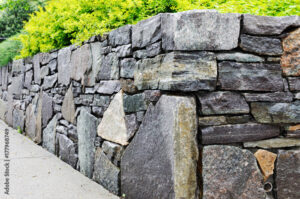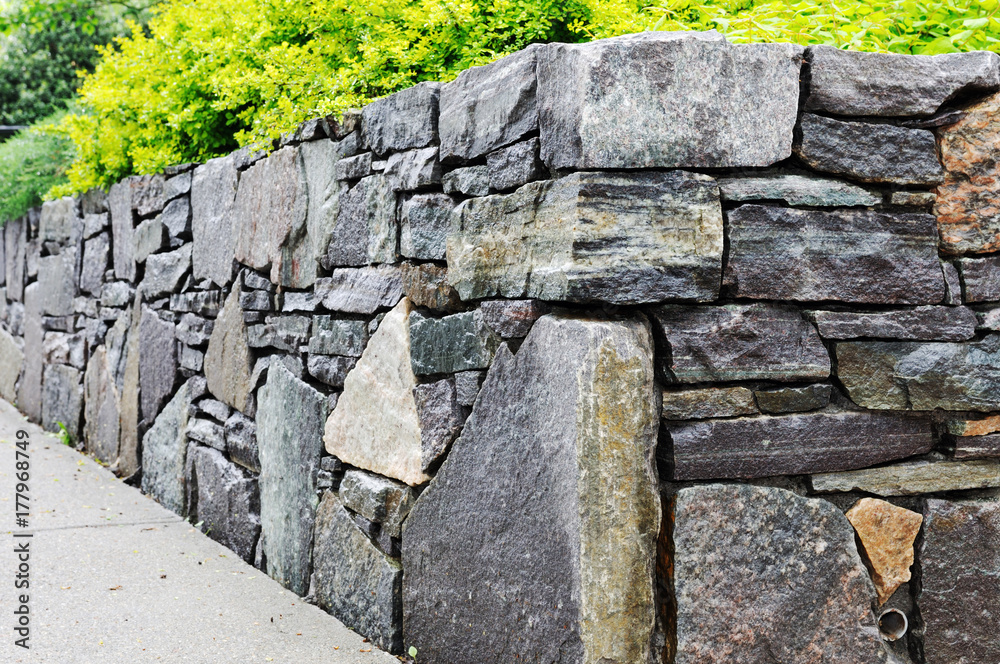Masonry brick and stone expand and contract differently. Masonry brick veneer walls are usually designed with horizontal and vertical expansion joints to accommodate these differences. Steel shelf angles are also used to support the weight of the masonry veneer above the expansion joint. You can check https://masonrycharleston.com/ for more information.

The engineer sizes lintels and shelf angles to meet the strength requirements of the design code. They are secured to concrete or masonry structural systems through anchor bolts.
The shelf angle is a structural component that transfers masonry veneer wall loads back to the building’s concrete backup structure and, in many cases, eliminates the need for lintels. It’s a simple but effective design solution that prevents cracking in masonry walls by dispersing the loads across a wider area. It also maintains a gap under the brick course, which is critical to proper waterproofing and preventing moisture infiltration.
The key to proper relieving angles is that they must be properly designed and detailed for the specific wall system they are supporting. It includes determining the correct sizing of the rise and its attachment to concrete and steel structures, allowing for expansion and contraction, and ensuring a proper gap under the brick course. In addition, the masonry shelf angle should be provided with metal flashing to protect it from deterioration and water infiltration.
Unfortunately, the construction documents for this project did not provide any details of how the relieving angles were to be installed. It is not unusual, as it’s difficult to anticipate all potential installation problems and errors at pre-construction meetings. However, this omission may have resulted from a mistake or misinterpretation by the contractor.
In any event, the masons installing this project’s masonry used mortar to fill the gaps under the brick courses and tightened the last period of brick up against the underside of the shelf angle. The resulting gap under the brick is too narrow, and as the brick expands, it forces sealant out of the joint. It can lead to long vertical cracks at building corners and brick displacement at the corner of the wall.
This type of distress is often the result of insufficient gaps under the masonry and improper design and detailing of the relieving angles. To remedy this, architects can provide comprehensive masonry restoration services, including the repair of existing relieving arches. We can also thoroughly inspect the existing masonry construction to identify any concerns and recommend repairs to correct them. We can then coordinate with the contractor to ensure these repairs are made during construction and provide regular inspections of the work to verify that the repairs have succeeded.
In modern building construction, floors, interior beams, and other load-supporting portions are supported by a structure of concrete or steel covered with concrete. The outer walls are merely sheathing of brick, stone, or terra-cotta. The weight of these cladding materials is transferred to the frame using relief angles (shelf angles). In multi-story building construction, similar shelf angles are usually used to support these outer walls at practically every floor level. It makes it possible to remove a wall on any one floor without disturbing the brickwork above or below that wall.
Shelf angles are anchored to the concrete building frame with bolts. They are usually provided with a series of slots for accepting the stems of the bolts. Bolted connections are preferred to welding because they allow adjustments and provide flexibility between the structural steel and concrete masonry panel walls. The slotted bolt holes must be properly aligned with the mortarless gaps between the masonry units to ensure the fence does not sag.
It is also necessary that the shelf angle be provided with a horizontal movement joint below it to accommodate frame creep and masonry thermal expansion. It can be achieved by leaving an open (mortarless) space between the bottom of the shelf angle and the concrete masonry panel wall or by forming a compressible joint with grout. In either case, this horizontal movement joint must be sealed to prevent water intrusion.
A shelf-angle support for building construction comprising a supporting means adapted to be partially embedded in the concrete building frame, a hanger consisting of a pair of superposed metallic members, the rear member 21 having a flange portion at its lower end to extend downwardly to support the shelf angle and a front member 22 having a mating opening 23 for receiving the stemv10 of the supporting bolt. In practical use, the hanger members may be positioned by pushing the heads 12 of the bolts upwards until a portion of the rear hanger member is firmly resting against the concrete beam 17 and by swinging up the front member 22.
An expansion joint, also known as a movement joint, is an assembly designed to hold parts together while safely absorbing temperature-induced expansion and contraction of building materials. They are commonly found between sections of buildings, bridges, sidewalks, railway tracks, piping systems, ships and other structures. They prevent structural damage from occurring to adjacent concrete structures due to the stresses induced by expansion and contraction.
In brick masonry walls, an expansion joint is a vertical joint filled with a highly compressible material to allow for shrinkage. A foam filler is often preferred for the expansion joint, as it provides maximum compression and is easy to keep clean during construction. A backer rod and sealant are used to weatherproof the joint as well.
Unlike control joints, which are used to control cracking, an expansion joint is intended to handle large movements of building materials. It is also used to avoid random wall cracking. When using an expansion joint with concrete masonry, it is important to use the correct type for the project.
For example, a control joint is designed to relieve stress induced by small expansion and contraction movements caused by curing. In contrast, an expansion joint is intended to handle the larger structural movement of concrete or masonry materials.
The typical spacing of an expansion joint is 30 percent more than the distance between adjacent corners. However, expansion joints should be placed at material transitions, junctions, and offsets instead of at the hub for maximum performance. It will help to reduce the number of expansion joints needed while minimizing the potential for stress concentrations and cracking.
In addition to expansion joints in angled masonry, movement joints are needed for many construction projects. They can be utilized in poured-in-place concrete, precast and cast-in-place concrete, reinforced and prestressed concrete, steel, and composite structures. The types of movement joints vary by purpose and include joints for small movement (EMSEAL BEJS, XJS, JEP), medium movement (EMSEAL BEES and XEAS), and large movement (EMSEAL EJF and Granor AC-AR). Properly selecting and placing these joints is essential for achieving a high-quality finished product.
- Vertical Expansion Joints
Expansion joints usually accommodate the movement of masonry cladding. These are designed to allow for the direction of the cladding caused by a change in temperature and moisture content of the masonry. These joints are commonly found between the masonry and the structural frame of the building. It allows the masonry to move independently of the frame, reducing the risk of moisture entering the framing and damaging the internal structure.
These movement joints must be correctly designed and installed. As with all masonry construction, errors can occur during the design and installation phases, leading to future problems. Therefore, Structural Engineers must be involved in detailing masonry movement joints in external building cladding.
Different movement joints are used in masonry construction, including control, building, and construction joints. Each is designed to perform a specific function and should not be used interchangeably.
A control joint is a plane of weakness in concrete masonry, which, when used with the appropriate reinforcement, controls the location of cracking due to volume changes caused by shrinkage and creep. This type of movement joint is typically sawn, cut, or tooled into the masonry wythe and may be filled with an inelastic material such as foam or a neoprene pad.
Another common type of movement joint is a building expansion joint (or isolation joint). It is a through-the-building joint that separates the masonry from the frame and allows for the expansion and contraction of the masonry. It is often used for buildings over four stories or 12 meters tall.
In the case of angled masonry, the movement of the cladding may be unevenly distributed due to different environmental and climatic conditions. It is important to provide horizontal movement joints in the masonry to ensure the cladding is stable, especially at the intersection of walls. It is also important to ensure that the frame properly supports the cladding and that conventio
